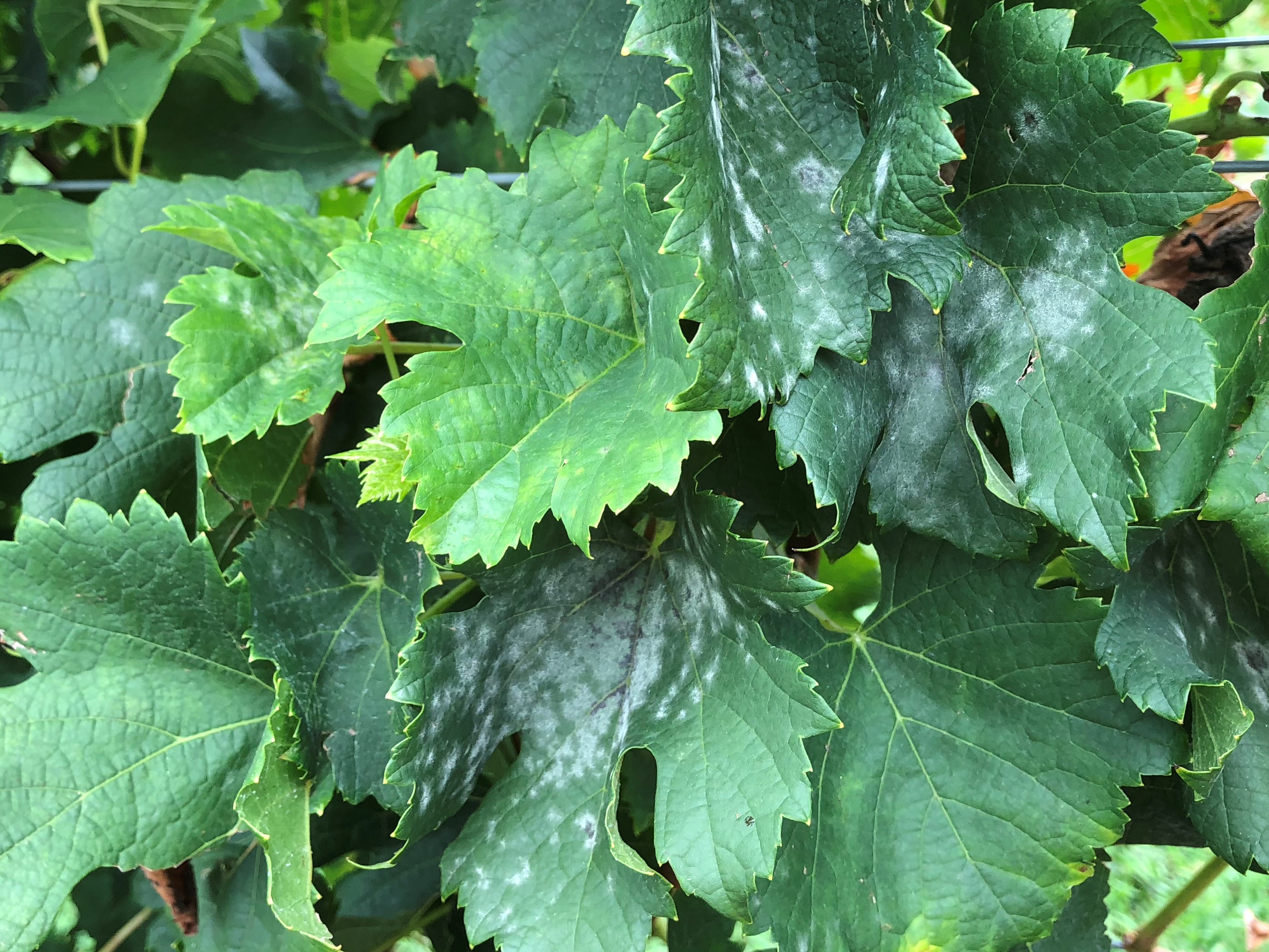Powdery mildew resistance in vineyards
Many grape species and hybrids share one significant issue in common – susceptibility to a disease called powdery mildew. To minimize powdery mildew and other diseases, grape growers spray fungicides throughout the season and even after harvest to protect leaves. Due to the season-long infection potential of E. necator, vineyard managers may employ as many as 13 to 17 powdery mildew sprays in any given growing year. Because of the numerous applications of fungicides, resistance can readily develop to different chemical classes utilized to control powdery mildew. UGA plant pathologists collected samples of powdery mildew from multiple commercial Georgia vineyards and tested for genetic mutations known to confer resistance. Through a national cooperative grant with Washington State and the USDA, the presence of these mutations was evaluated for samples on DNA isolated from Georgia powdery mildew samples. Results indicated that quinone outside inhibiting (QoI) fungicide resistance is widespread among E. necator populations, and demethylation inhibitor (DMI) resistance is a potential concern as well. Efficacy of multiple fungicides were tested for powdery mildew control at the UGA Research and Education Center in Blairsville, Ga. This trial clearly documents field resistance of powdery mildew to the QoI fungicides and confirms the lack of activity by these fungicides in most sites in Georgia; in addition, this provides the first report of DMI resistance in grape powdery mildew in Georgia. Rotation among all active chemical classes will require producers to purchase multiple chemicals that will be utilized only once per season, but alternation of chemical classes is critical to maintaining these fungicides for years to come.

